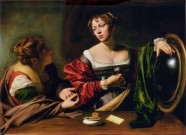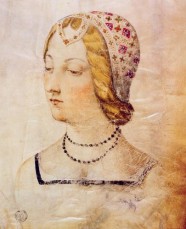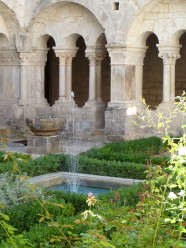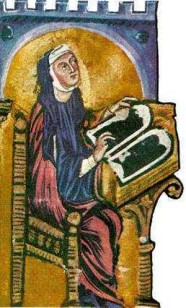As the author of two novels, Conceit (Doubleday 2007) and Muse(Doubleday 2013), I often get asked “Where do you get your ideas from?”
Actually, I waited for years for my first good idea to come along. Finally, when I was about fifty, I stumbled across the story of Veronica Franco, a poet and “intellectual courtesan” in 16th-century Venice. What if someone dug up a lost manuscript by Franco? That would make a great book, but unfortunately, it had been written. Were there any courtesans in papal Avignon, a city equal in splendour to Venice? I had visited Avignon and seen the pagan frescoes in the Pope’s bedchamber. What sort of antics had gone on there? Avignon was a city of men, but not just ordinary men—unmarried clerics. I read in Peter de Rosa’s scandalous book, Vicars of Christ, that 14th-century Avignon had “spectacular whores.” Eureka. Avignon would be better than Venice.
 I took a glass of red wine up to my computer—actually, I took the whole bottle—and settled down to write. I remembered that Laurence Sterne had said, “I begin with writing the first sentence—and trusting to Almighty God for the second.” Sterne must have been right, because I felt divinely inspired. The ideas spilled out easily, like water from a sluice.
I took a glass of red wine up to my computer—actually, I took the whole bottle—and settled down to write. I remembered that Laurence Sterne had said, “I begin with writing the first sentence—and trusting to Almighty God for the second.” Sterne must have been right, because I felt divinely inspired. The ideas spilled out easily, like water from a sluice.
I wrote the first thirty pages of Muse in one go, an exhilarating start. However, the morning light was cruel. The hard part, I now discovered, wasn’t coming up with ideas—I had lots of those—but figuring out what to do with them. I had a character. Two characters, actually–a medieval one and a modern one. However, a novel needed plot and structure to reach three hundred pages.
Surely that wasn’t difficult? I would send my modern character, Cécile, to Avignon to stay chez grandmère, where she would find a medieval journal written by an ancestor, Solange Le Blanc. This was getting tricky, because somebody—me!—would have to write that journal. I walked 14th-century Avignon in Solange’s footsteps, exploring the narrow, twisting streets (both in person and in my imagination) and discovering that it was in the church of Saint Clare that one of my favourite poets, Francesco Petrarch, had met his spiritual love, Laura.
He had written over three hundred poems about her, but he had also fathered two children on a mysterious flesh-and-blood woman. This was serendipity. What kind of woman would attract Petrarch? Solange would need an education to equal his. Where could a woman get an education in 14th-century Provence? In a Benedictine abbey. Why would the nuns take her in? Because she had the gift of clairvoyance, like Hildegarde of Bingen, whose visions resulted from optic migraines, such as I experienced myself.
I had almost abandoned the idea that Solange would become a courtesan when I discovered that Pope Clement VI had a palace hostess, his niece Cécile de Turenne. Cécile—the same name I had used for my modern character, a lovely synchronicity! In another twist, I learned that Petrarch had criticized Clement for his love of pleasure and women, especially his “niece” Cécile, “soiled with incestuous embraces”. What if Solange was this “niece” and Petrarch’s jealousy had deformed his love into anger? I was two years into writing Muse and at last the story had the momentum to drive it three hundred pages.
However, before I could finish the novel, I was seduced by another poet and another walled city: London in the 17th century. I spent the next seven years writing Conceit, the story of John Donne’s daughter Pegge, which became my debut novel. When at last I returned to Muse, my editor Nita suggested that Solange was strong enough to carry the novel on her own shoulders and I sacrificed my modern character, Cécile, to focus on Solange. It took another four years of work to finish Muse.
Fifteen years had elapsed since I took that glass of wine up to my office and none of the first thirty pages had made it into the final draft of Muse.
This blog first appeared at the Random House Retreat blog.



